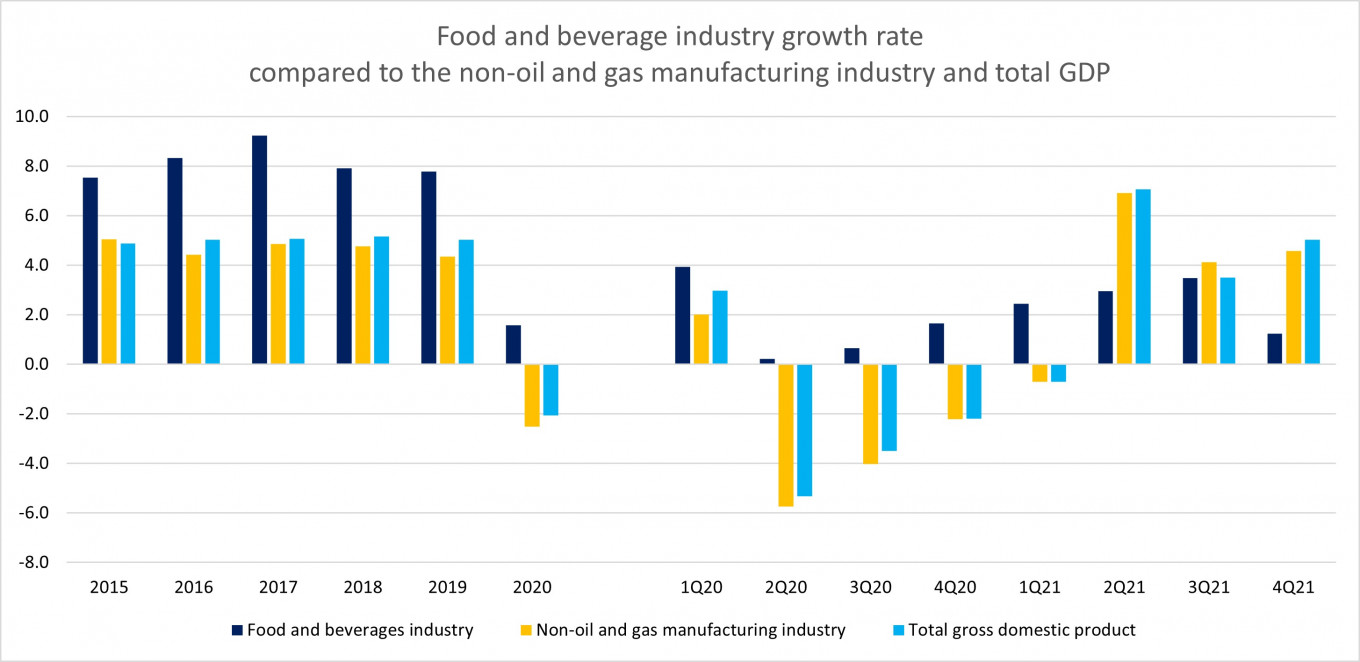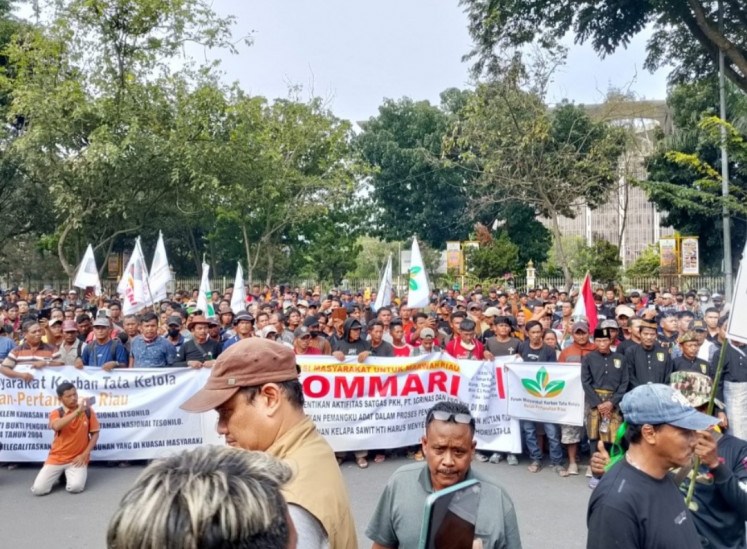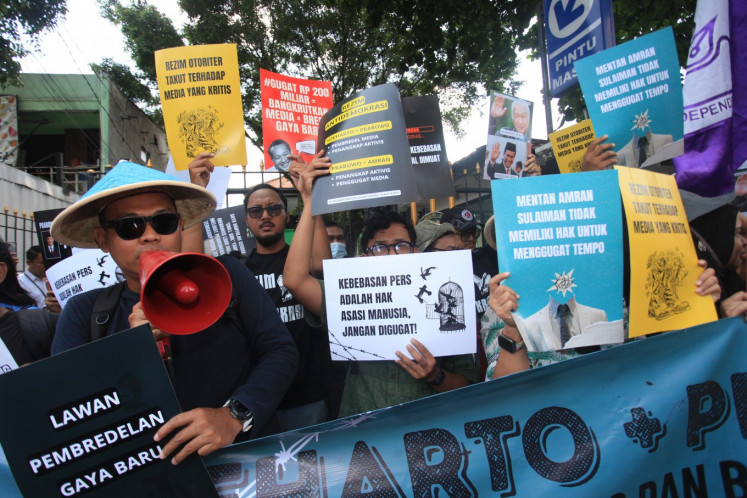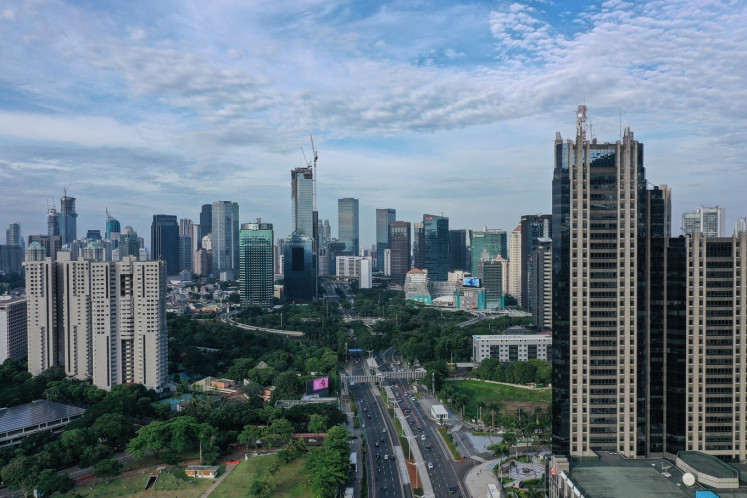Popular Reads
Top Results
Can't find what you're looking for?
View all search resultsPopular Reads
Top Results
Can't find what you're looking for?
View all search resultsF&B industry’s challenges amid growth recovery momentum
Better handling of the pandemic, including the acceleration of the vaccination program, will boost consumer confidence and public mobility, which in turn will drive economic activity and people's purchasing power.
Change text size
Gift Premium Articles
to Anyone
T
he performance of the food and beverage industry has shown improvements in line with Indonesia's economic recovery. As an industry that provides basic necessities, the food and beverage industry has proven to be quite resilient during the pandemic despite experiencing a slowdown in gross domestic product (GDP) growth. Statistics Indonesia (BPS) data shows that the value of the food and beverage industry’s GDP never contracted during the pandemic.
Even in the second quarter of 2020 (2Q20), the food and beverage industry still grew by 0.2 percent year-on-year (yoy) while most industries experienced contraction. Therefore, the food and beverage industry is one of the sectors that is relied upon as a driving force of Indonesia's manufacturing industry going forward. National economic recovery is expected to accelerate in 2022. This is a growth momentum for the food and beverage industry, which is projected to grow by 5-7 percent this year.
However, various challenges arise and have the potential to hamper the pace of recovery in the food and beverage industry in the first quarter of 2022. Starting from the increase in Omicron cases followed by restrictions on mobility, which in turn has the potential to affect sales of food and beverage products, to the increase in commodity prices for food raw materials, particularly wheat price after the Russian invasion of Ukraine. As an illustration, the world wheat price has touched US$ 12.94 per bushel as of Monday, or a 67.1 percent increase year-to-date (ytd).
Regarding the increase in commodity prices, the trend of increasing prices of food raw materials such as sugar, wheat and crude palm oil has been taking place since the fourth quarter of 2020. Price increases accelerated in 2021 in line with the global economic recovery, energy crisis and the potential Russian invasion of Ukraine. As an illustration, the average price of wheat in 2021 rose by 23.9 percent yoy, raw sugar increased 34.8 percent yoy and crude palm oil rose by 60.7 percent yoy. Raw materials dominate about 80 percent of the production cost structure of the food and beverage industry.
Sugar. (Bank Mandiri/-)After the Russian invasion of Ukraine actually occurred, commodity prices increased uncontrollably, especially wheat, which was the main export commodity of the two countries. Within two months, world wheat prices have almost doubled. If the Russian invasion of Ukraine is prolonged, we will see that the supply disruption of wheat will affect processed food prices in Indonesia, considering that this commodity is not produced domestically.
Indonesia imported 11.5 million tons of wheat in 2021, an increase of 8.6 percent from the previous year. Of this amount, Ukraine supplies 27.5 percent of Indonesia's total wheat imports or ranks as the second country of origin for Indonesian wheat imports after Australia with a share of 40.9 percent.
[gal:3]
Rising raw material prices amid market demand conditions that have not yet fully recovered will put significant pressure on domestic producers. There are many choices that producers can make in response to this increase in input prices. This choice will be determined by several factors, including the product, brand equity, target market and the company's profitability management.
Some companies may prefer to pass the increase of production costs to their consumer. It will be easier for producers with product types that target the middle to upper market segment and already have strong brand equity to increase product prices. On the contrary, sometimes companies choose to sacrifice some of their business margins to maintain their market share. Others prefer to reduce product volumes to maintain their margin.
We think that there is some government support for the food and beverage industry to maintain this recovery momentum, especially amid rising raw material prices. From the supply side, it is important to diversify the import market by facilitating the contract negotiation of new market sources. In this regard, we should be grateful that the dominance of Indonesian wheat imports since 2021 has begun to shift from Ukraine to Australia, although it is realized that the increase in global wheat prices remains inevitable given the position of Russia and Ukraine as the world's main wheat exporters.
The government needs to keep the prices of essential goods stable through market operations and the smooth distribution of goods and ensure the adequacy of domestic supplies, as well as eradicate the hoarding of goods, which is prone to occur when the prices of necessities soar. The government also needs to synchronize its policies with the monetary authority in controlling inflation to maintain the people's purchasing power.
We believe the food and beverage industry this year will still be able to grow better than last year, provided that those conditions do not worsen and become a prolonged risk factor. Better handling of the pandemic, including the acceleration of the vaccination program, will boost consumer confidence and public mobility, which in turn will drive economic activity and people's purchasing power. During the pandemic, sales of the food and beverage industry have still been driven by basic home kitchen needs, such as cooking oil and seasoning, as well as fresh and instant food. Meanwhile, sales of food and beverages for consumption outside the home began to improve along with increased mobility.
We all hope that Russia-Ukraine tensions will not be prolonged so that the food and beverage industry can take advantage of the economic recovery momentum to grow optimally and achieve its targets.
--
Senior Industry Analyst, Bank Mandiri











